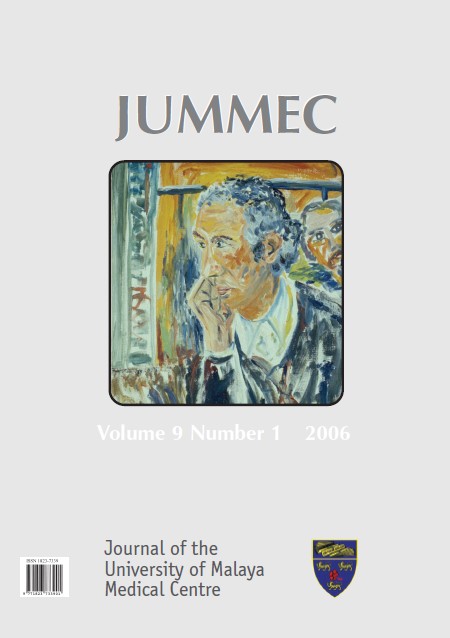CYTOPROTECTIVE EFFECTS OF HONEY IN COMBINATION WITH AQUEOUS AND ETHANOLEXTRACTS FROM CHROMOLAENA ODORATA L. (EUPATORIUM ODORATUM L.) IN RATS
Abstract
Six groups of adult Sprague-Dawley rats were orally administered with
a variety of treatments to elucidate their cytoprotective effects. Absolute ethanol combined with HCl was used to induce gastric lesions in rats. Aqueous and ethanol extracts of Chromolaena odorata, a famous folk herb for treating skin wounds were evaluated to determine their protective effect on gastric mucosa. In this study, aqueous
extract and ethanol extract of C. odorata were combined with honey. In addition, honey alone and honey combined with cimetidine were also evaluated. Rat stomachs were examined grossly and histologically. Results were expressed as inhibition percentage. The honey and aqueous extract combination showed the highest inhibition percentage (72.67%) followed by honey and ethanol extract (58.92%), honey and
cimetidine (56.55%) and the lowest was honey alone (46.74%). However, there were no significant differences between the effects of aqueous and ethanol extracts of C. odorata and honey in promoting cytoprotective effects and this may be due to the small sample size. Nevertheless, these results suggest that C. odorata and honey may be beneficial in treating induced gastric mucosal injury.
Downloads
Downloads
Published
Issue
Section
License
All authors agree that the article, if editorially accepted for publication, shall be licensed under the Creative Commons Attribution License 4.0 to allow others to freely access, copy and use research provided the author is correctly attributed, unless otherwise stated. All articles are available online without charge or other barriers to access. However, anyone wishing to reproduce large quantities of an article (250+) should inform the publisher. Any opinion expressed in the articles are those of the authors and do not reflect that of the University of Malaya, 50603 Kuala Lumpur, Malaysia.


